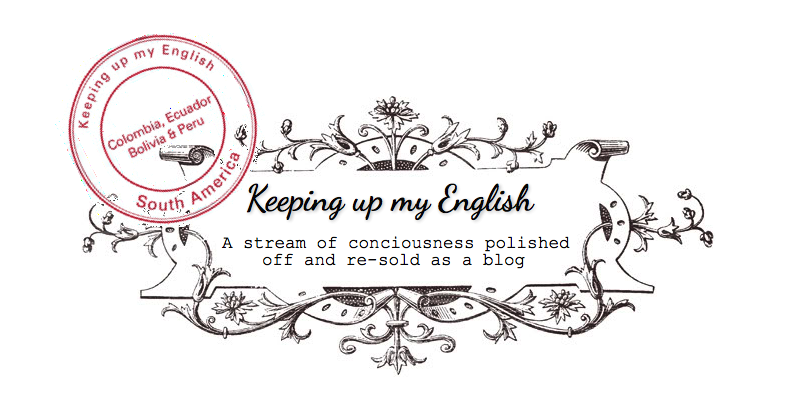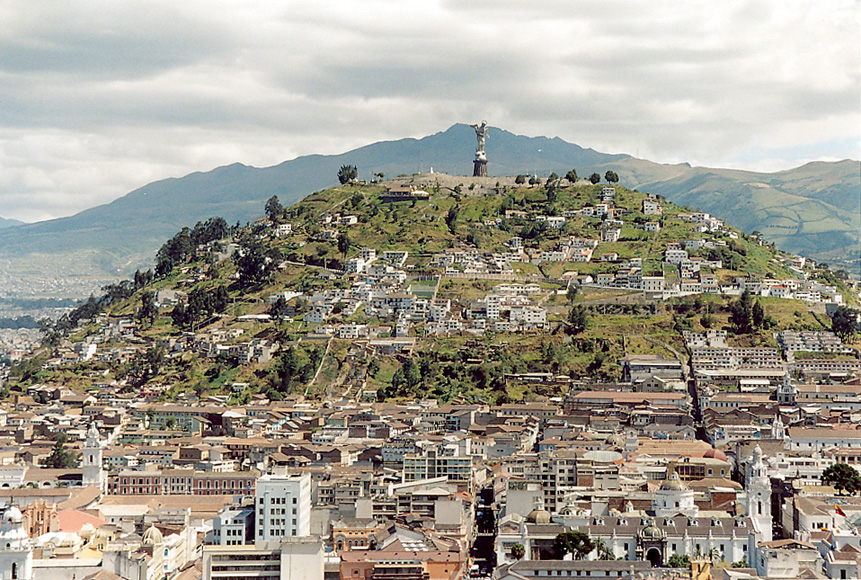Desert Nights, Huacachina > Wild Rover (#1), Arequipa > Bothy Hostel, Puno (Peru) > Wild Rover (#2), La Paz (Bolivia)
The bus ride away from the strange bubble that was Mancora offered views that completely contrasted any that we had seen so far on our journey. Having barely escaped the hostel in Mancora, we had only been vaguely aware that much of Peru´s north and west coast is desert. For the entire 26 hour journey to Huacachina, a sandboarding hotspot 4 hours south of Lima, we were exposed to nothing except sand dunes, desert, sand covered mountains and small, sandy towns. The landscape variation (or lack thereof) was a welcome change, and the roads even more so, as the Peruvian government have clearly put more into their highway & bus systems than Colombia and Ecuador. With our best night´s sleep on a bus under our belts (meal and four decent films included) we arrived at the isolated oasis-town of Huacachina.
Huacachina, as described by the lonely planet, is somewhere many travellers get lost for days. By this, they don´t mean in the vast dune covered desert which surrounds it, but instead in the comfortable hostels, dune buggies and comicly named bars that surround the oasis. Trying to dispell a vague sense that we were surrounded only by gringoes, we certainly appreciated the dramatic contours surrounding the green(y brown) oasis, where the horizon was lost to the sand dunes standing hundreds of metres tall over the town.
 |
| Huacachina oasis & sand dunes |
Having earmarked only one day to experience Huacachina, we spent our first morning clawing our way up the main dune that looked over the oasis. It took a slightly easier than expected 40 minutes to reach the top, whereby many photo opportunities were fully exhausted and we sat enjoying the view, and the heat, whilst watching some professional sandboarders. It seems to me a sport only to be enjoyed by the most hardcore, as the climbing to sandboarding ratio is rather imbalanced..! Running down the dune was by far the most fun part, as the three of us bounced down like Niel Armstrongs on the moon, safely making it to the bottom in a matter of minutes.
A falafel lunch later, we prepped ourselves for the real activity of the day and belted ourselves into a sturdy looking buggy, which had 14 seats and a roll cage. From the word go, the driver, clearly well practiced, treated the dunes as though they were a roller coaster. He revved up the dunes only to tip straight over the top and drop down the 100 metres on the other side. Poor Bean in the front looked terrified while Lizzie and I whooped and hollered with the rest of them in the middle. After about 10 minutes of this pleasure we stopped for a `photo-op´ before continuing 5 minutes to our first sandboarding location. Having never snowboarded, I was relieved to find that no vertical position was required, and it was really body-sandboarding whereby we were pushed down the dunes on our stomachs, headfirst. This was not much of a consolation, but after seeing Bean make it safe to the bottom (always the guinea pig!) I gave it a go. `Elbows in, hands in, legs out`, in 10 seconds I had been prepped and pushed and was on my way down hair whooshing, sand spraying and me terrified I´d veer off in some unruly direction unlike my predecessors. Veer I did not and was fully pumped with adreneline when I reached the bottom in one piece. Fortunately, Lizzie followed, similarly flushed and happy on arrival and we were scooped back into the buggy for ´uno mas grande?`. Uno mas grande turned into quatro mas grandes, with the fourth being particularly gruelling with a blind dip in the middle, but with each hill we gained confidence and enjoyed it more. We returned to camp cheery with the feeling of well-spent money and adrenaline. The next morning we set off early for Nazca, a short, 2 hour bus ride away.
| Nazca monkey |
| Nazca hands |
For those of you who have not heard of the Nazca lines, they are a great mystery to the Peruvian
people. Stretching for miles over the south Peruvian desert, hundreds of
white lines were once etched into the sand, only to be seen from the
first planes to fly over in the 1920s. On discovery, over 300 areal
pictures were revealed, depicting many well known objects including a
monkey, some hands, a hummingbird, a condor and an astronaut (although I
suspect that this was not exactly what the designers had in mind!). The
mystery lies in that noone really knows when they were created, who by
or why. One theory suggests it may have been an extensive calendar used
for crop growing...but despite devoting their whole lives to it,
numerous scientists have been otherwise stumped. As scientists not
wanting to be stumped, Bean and I opted for the mirador (viewpoint)
option, rather than the microlight option that Lizzie took. Bean and I
soon found ourselves stranded on the highway in the desert, next to the
apparent mirador, not another soul for miles around. A rickety climb to
the top later, we stayed just long enough to snap a picture of the
´hands´ and the ´tree´. Pleased to have seen them, but worried for our
safety, we cautiously made our way back down, entertained ourselves with
some novelty jewellery on sale, and headed back to Nazca town centre.
Meanwhile, hundreds of metres overhead, in her microlight, Lizzie was
getting a rather different perspective of the lines. Although offering
full views of 16+ of the most famous
etchings, the flight proved a challenge in itself and Lizzie returned
after a few
hours with some decent photos, but very pleased not to have vomitted,
unlike the weaker stomached 50% of her aircraft. We hopped on the bus
that evening to our next stop in Peru, Arequipa.
 |
| Arequipa |
Arequipa is a city situated 10 hours south of Nazca, both protected and threatened by three intimidatingly beautiful volcanoes in various compass directions. The volcanoes, probably rather violently, once donated their lava, also known as ´sillar´, to the construction of the hundreds of the white walled buildings that line the streets of the city. Arriving to fairly murky weather, the city´s beauty was not revealed until later, when the sun came out and lit up the architechture. After another less-than-comfortable night bus, we spent our first day in Arequipa slowly exploring the streets and getting a feel for the relaxed atmosphere. A friend that we made in the hostel, Andy, introduced us to a market on the other side of town. It was exactly the kind of place I had been trying to find; a real, buzzing local market with everything you might need from bags, to juices, to frogs, to batteries, to goats´ heads. Andy took us throught the dense isles to the back of the market where lied a multitude of ´jugo natural´ (juice) stalls. He had already befriended one stall owner, who gave him her own conconcoction containing eggs (ugh!) and us our standard choice of ´mango y maracuya´(mango/passionfruit). Very satisfied, tired but well-fed, we got an early night´s sleep in our Irish themed ´Wild Rover hostel´ (a name you will hear again).
The next day was our first day devoted to shopping. Arequipa is the first city we had visited with a comprehensive selection of shops, mainly focussing on the sale of alpaca goods. We appropriately bought what are known as ´gringo hoodies´, alpaca jumpers with ´íncan´designs and alapacas all over them. Although we regrettably looked like everyone in our hostel (bar lizzie who splashed out on an enviable baby alpaca knitted number) these hoodies were to save our lives in the weeks to come. Other purchaces included socks, gloves, hats...you see where this is going (...to Bolivia!). A trip back to the market for a stuffed pepper lunch (which our stomachs did not appreciate) and to the mirador (viewpoint) for a slightly disappointing view, comprised the rest of the afternoon. The Wild Rover had a good atmosphere and after a wonderfully typical peruvian dinner; alpaca for me (DELICIOUS), local shrimp bisque (chuipe de camaron) for Lizzie and guinea pig stew for Bean, we headed out to the UV themed party at the hostel. Lo and behold, who turns up unannounced, but Shane & his travel buddy, Brent, (of our filght out to Bogota, Santa Marta, Mancora), and we spent a great night catching up.
 |
| Puno |
We only had a fleeting affair with Puno, where we climbed a mirador to see lake Titikaka, did some salsa here as music ws being pumped out over the rooftops, and walked down to the lake to see it up close. We caught the afternoon bus out of Peru to Bolivia´s capital La Paz.
Obviously, I have fallen behind somewhat with the blogs and for this reason, I will only brush over or first visit to La Paz and Sucre (middle Bolivia), partly selfishly, because I was ill, but partly because there are good tales to tell of our trip to Tupiza in the south and the four day drama over to the Uyuni salt flats.
Catch up soon chicos y chicas!
(NB. Photos are not mine, USB is not working here :( )

















